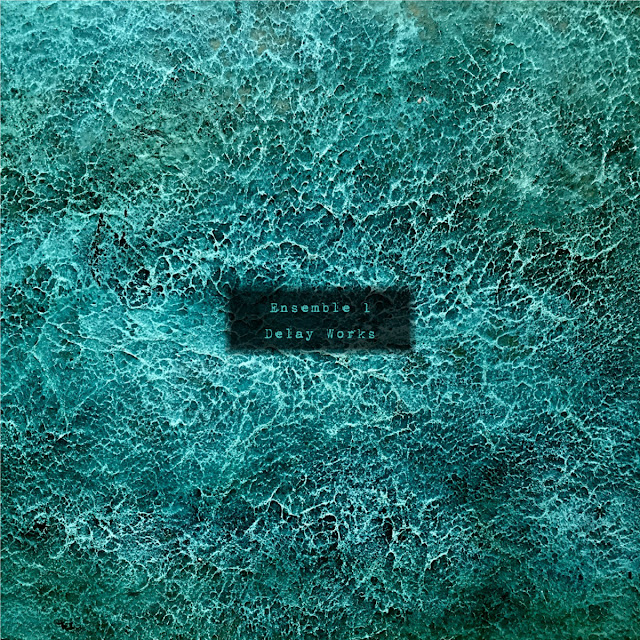THE NECKS – THREE
THE NECKS – THREE
Fish of Milk 2020
Fish of Milk 2020
Nominative
determinism being the order of the day for Australian minimalist jazz cult trio
The Necks, their 21st album contains three pieces (2 + 1, geddit?),
all around 20-minutes. The groove-based improv and pulse-less spatio-textural
exploration of the first two, ‘Bloom’ and ‘Lovelock’, thematically span the
group’s pivotal releases, Hanging Gardens (1999) and Open (2013).
The final track, ‘Further’, even offers the sort of uplifting theme that periodically
enters Hanging Gardens like a mirage plotted on tumultuous,
asymptotic cyberfunk. That album served as the avant-jazz world’s pre-millenial
summation of its adaptability to drum 'n' bass and hip-hop. Three conveys
a similarly multi-faceted evocation of musical history whilst encompassing more
than enough facets of this group’s continual evolution.
‘Bloom/Lovelock’
are homeostatic snapshots of immersive processes. The time dilation effect of
their longer works is still there, just brought into more intense focus. Raw
jams performed by keyboardist Chris Abrahams, bass player Lloyd Swanton and
drummer/guitarist Tony Buck are molded through editing and multi-instrumental
overdubbing. The inventive potency brings to mind condensed moment forms
(if that doesn’t stray too far from Stockhausen’s original meaning). Process ebb
and flow suggest larger visions, details hovering on the verge of tangibility.
Bustling micro-clockwork
rhythms on ‘Bloom’ are spun from the motorik laminar fusion Abrahams’ collaborator
Oren Ambarchi has made a stock-in-trade of late. A crazed cyber-samba’s not-so-gentle
journey into that good entropic beyond, ‘Part 3’ of Ambarchi’s Hubris exudes
a microbial virulence that seems even more apocalyptic on recent reacquaintance
than at the time of its 2016 release. ‘Bloom’ is less febrile, more foliate: a
vision of a world thriving in post-anthropogenic splendor.
Abrahams’ cyclical
piano chords are in constant plangent motion. Spiraling distorted organ lines reminiscent
of Mike Ratledge, Terry Riley and even Jon Lord at their most modal and fugal entwine
like rhizomes in the middle distance. Swanton’s arco bass drones hover like
primordial dragonflies. Delay-bathed behind-the-nut plucks and scrapes from
Buck’s guitar conjure ferns unfurling luxuriantly in pure, un-diffused sunlight.
The Necks’ music is often described as cinematic: the subjective gaze suggested here
is consciousness contemplating its own forgetting in eons beyond history.
On subsequent
listens, it becomes a Fourth World/Illbient remix of the same track by Kevin
Martin, channeling dubwise the spirits of Teo Macero, Faust engineer Kurt
Graupner and Pharaoh Sanders’ Black Unity a la Techno Animal’s Re-Entry.
Details of a fractalized mosaic emerge through incremental adjustments of EQ,
delay and phasing on Buck’s isochronous percussion. As with Martin’s production techniques,
there’s a similar orientation towards drone effects like eerily dislocated siren
calls.
‘Lovelock’ is
named after the late Australian rock singer Damien Lovelock of The Celibate
Rifles; but as the more graceful colors of ‘Bloom’ suggest that other Lovelock
(biologist James, of Gaia fame), any sense of lamentation is similarly verdant.
There’s also a Lovelock Cave in North
America’s Great Basin where surroundings are beneficial to the conservation of
organic and inorganic material. It’s worthwhile holding all three associations of
the name in mind to encompass this track’s affect. There’s a pensiveness
suggestive of melancholy and loss, but its span and tone are impersonal,
sedimentary, synchronic. Abraham’s piano lines conjure chromatic impressionist
suspense cues pitched between Debussy and Takemitsu. The bass, switching unobtrusively
between bowed drones and delicate muted fan strokes, and processed timpani and
snare rolls suggest waves bringing nutrition in one pass, erosion the next, in everlasting
endogenic cycle. Previous releases indicate The Necks have osmotically absorbed
Brian Eno’s regard for mathematician John Conway’s ‘Game of Life’ computer
program and its musical implications: simple rules that produce complex results.
There’s a lot of the scintillating tension of Eno’s ‘Iced World’ on their 2018
release Body; on ‘Lovelock’ the aesthetic sublimation is even more
natural, the rhythmic processes more tectonic than busily transient.
‘Further’ is a
gently sloping groove in five meter that suggests the placidity of earlier
Necks albums like Aquatic. There’s more of the opening track’s dense
percussion layers; this time reminiscent of the stochastic automata of Robbie
Avenaim, with whom Abrahams and Ambarchi collaborate in another trio formation.
A fully realized theme in two-chord vamp form, ‘Further’ is the most radical
thing on this album in terms of a return to a more archetypal formalism.
The Necks’ music
often suggests landmarks of ecstatic jazz whilst substituting minimalist integration
for maximalist expression. A February concert at MONA’s Logan Gallery in Hobart,
Tasmania had discernable traces of the opening fanfares of John Coltrane’s ‘Seraphic
Light’ and Pharaoh Sanders’ The Creator Has a Master Plan in its dense interplay.
While Swanton’s meditative bass seems to
extemporize on Cecil McBee’s riff, Abrahams’ arpeggios on ‘Further’ conjure Alice
Coltrane’s harp glissandi on her seminal ‘Journey in Satchidananda’. It’s pleasant
listening, if not quite as exciting as the refinement of process going on in
the preceding tracks. A possible deviation into minimalist smooth jazz over
agitation meditation?
A retrograde
step is an opportunity to take stock of progress by contrast with tradition as
well as change things up. Given how the global economy is taking an enforced
break thanks to the coronavirus from the neoliberal ideology of perpetual
growth, its an opportunity for everyone to reflect on other ways of being. Three
is an excellent soundtrack for such contemplation. These brilliant musicians will
hopefully continue to offer the deeply satisfying variety that’s available on
this release when that other global crisis status quo returns.
COPYRIGHT © 2020
Jon Kromka




Comments
Post a Comment